Can I grow peppers indoors under lights?
By: Scribz.
"I want to grow peppers under lights how do I get started??"
Generally speaking, growing peppers under lights can be divided into 2 categories. First is the person who just wants to get a headstart on the growing season, or wants to try the more exotic seeds unavailable locally in his or her garden center. This requires only a modest investment in a couple of fluorescent shoplight fixtures from your local DIY (Do It Yourself) superstore (Lowes, Home Depot, etc.) or even Wal-Mart. Rigged up with any of a dozen combination of bulbs, from the cheapest "Cool Whites" to the most expensive "Gro-Lights", hung above an unused card table, or a plant stand made from plans available on the net, and you have the basic ingredients for seed starting. The light fixtures should be hung on chains or pulleys, allowing height adjustment as your seedlings grow. Great results have been obtained from all Cool White bulbs. (A dollar or two apiece)
Gro-Light bulbs are incredibly expensive, and the results are often less than expected, as the amount of light available is usually less than the cheaper bulbs. Go with whatever your budget allows.
Successful gardening under lights depends on several factors: light intensity and wavelengths available to the plants (Cool White are more intense and richer in the blue spectrums, stimulating stockier seedlings), correct watering, and temperature control.
Good air circulation is a must to prevent fungus, molds and mildew around your seedlings. Fluorescent fixtures are only able to provide enough lumens (the measure of light used to rate bulbs) to penetrate several inches of foliage, therefor they must be placed within 1"-2" of the tops of your plants. This becomes a problem as the plants get more than 6"-8" tall, as there just isnt enough lumens available to keep the high-energy peppers growing stocky. They will begin to get "leggy", stretching for all available light. Simple reflectors made from aluminum foil around your setup will direct every available lumen to your plants, as well as keeping humidity and temperature up (important if you are gardening in your basement in a cold climate). Never try to start seedlings under regular incandescent light bulbs such as floodlights, regular lamp bulbs, heat lamps, etc. The light they provide is almost totally in the "red" spectrum, and very weak, stimulating fast leggy growth, and in several days your seedlings will be 6" tall with 2 tiny seed leaves, or cotyledons, and flopping over. Heat buildup under the fluorescent fixtures is rarely a problem, as the heat is spread out over the entire length of the fixture.
Once you have started your seeds in whatever way you do, place them under the fluorescent fixtures as close as 1", water only enough to keep the medium moist-to-dry, provide good air circulation with a 6" fan from Wal-mart, keep the temperature warm (70-82 degrees is fine during the day, a little less at night is OK), and place your lights on a timer to run 14-16 hrs. a day. (I have had excellent luck with the cheapo timers from any hardware, others have found it better to get a more expensive timer. Again, budget rules.) Fluorescents are extremely cost-efficient, and 4- 4ft. tubes running 16 hours a day with the timer and fan should barely make a dent in your electric bill.
Soon you will have a forest of seedlings just remember, you will have to provide light for all of them as they get bigger. Its really that easy, and the only way to get seedlings of some of the exotic peppers available as seeds-only from some suppliers. Dont start your seeds too early, as I did this year. 8-10 weeks ahead of the last frost date for your area will be plenty of time except for a few fickle germinators.
OK, Ive tried the fluorescents and now I want to do more Whats next??
The second category of pepper light gardening is the person who wants to overwinter a few treasured plants in containers, or extend their growing season. Lets face it, the lure of laying out a few fresh organically grown Datils or Red Carribean Habs in December for your chilehead friends is too much to resist large-scale or commercial growing under lights is beyond the scope of this authors experience.You can attempt to overwinter peppers with just fluorescents and available window light, but probably the plant(s) will go semi-dormant, drop leaves, and possibly shrivel up and die. Under HID (high intensity discharge) lamps, you can give peppers warmth, and lots of lumens. (remember, that all-important unit of measure of available light)
HID lamps give off boatloads of broad spectrum of light with both red and blue wavelengths. (and lots of heat) Think of HID lights as the fluorescent lights cousins on steroids.
There are several types of HID lamps available to the enthusiast. Only two are really suitable for use as grow fixtures. HPS (high pressure sodium), and MH (metal halide) bulbs and fixtures have both been used very successfully as grow fixtures. Halogen bulbs, and mercury vapor lamps (both available commercially as low-cost security lights) are also HID lamps, but should not be used, as their initial cost advantage is offset by much higher operating costs. (i.e. more heat, less light, and a higher electric bill) HPS provides a red-rich spectrum, particularly good for flowering. It is also the most cost-efficient of the 2 over the long haul. Disadvantages of using all HPS light is some growers think it stimulates more leggy growth, and the plant will have an unnatural look under the lights due to the strong yellow cast of the light itself. MH bulbs are blue-rich, and slightly less efficient than the HPS. The appearance of the plant is closer to that outside, and the plant may grow bushier and slightly less tall. Both types have been used successfully to grow high-energy plants to maturation. Special bulbs of each type are available to provide more red-blue balanced light, but are a bit more expensive. Some growers use MH fixtures for early growth, and change to HPS fixtures for flowering and fruiting. A 500 watt HID fixture may throw off as much as 50,000 lumens, available as a 2x3 (6 square feet) growing area. Compare that to a 4ft. flourescent Cool White bulb which might throw off 3000 lumens spread out over a large distance. (Doing the math, one 500 watt HID bulb could throw off as much light as 16-17 fluorescent tubes using a total of 640 or more watts) More watts used with flouros, less concentrated light = higher electric bill to grow the same plant. Without getting too technical, the power company figures your bill based on kilowatt hours perhaps 6.4 cents for each 1000 watts of power consumed per hour it would cost the same to run 4- 250 watt fixtures for one hour (6.4 cents) as 1 - 1000 watt fixture for the same length of time. Just as a point of reference, in a sunny summer location, Mother Nature will flood every square foot of garden space with 75,000- 100,000 lumens of perfectly balanced sunlight- free!!
Growing under HID lamps requires some thought ahead of time, planning, and a bigger budget. Where are you going to put a 500 watt fireball in your home which is on for 16 - 24 hrs. a day, throws off as much light as 24 regular 100 watt light bulbs, as much heat as a small space heater, and bleaches carpets and fabric and can cause cataracts?? Most people opt for a closet or basement setup, each having advantages and disadvantages. As long as the basics (light, warmth, water, correct ambient temps, and humidity) are kept in balance, almost anywhere can become a grow-room.
HID fixtures are available as low-cost security fixtures at your DIY superstore, or as beautiful works of art from the growcenter, complete with cutesy graphics, and even separate ballasts, the part of the setup that generates a chunk of heat. A separate ballast allows you to place it away from your main grow area, and keep optimal ambient temps more easily. HID lamps CANNOT be used in regular incandescent fixtures. DONT even try. You must use an HPS bulb in an HPS fixture, and likewise, an MH bulb in an MH fixture. Growstore setups can be quite a bit more expensive than DIY fixtures, and a good compromise is some of the sellers on the net who will provide top-notch fixtures with separate ballasts and polished reflectors, without the high designer pricetag. If you are growing in your basement, who cares what the light looks like when carefully placed, 500 watts of HPS or MH light from either a DIY fixture or a fancy designer setup will grow equally well.
I have found that claims for any HID setup are usually exaggerated. HID light penetrates vegetation to about 12-18", and is much more concentrated than flouros. I figure a 250 watt fixture will be enough light for one plant 2-3 tall when bushed out. So if you have 4 treasured plants you want to overwinter, you will probably need at least 650 watts, and as much as 1000 watts to attempt to keep up with what Mother Nature floods the plants with free every day in the summer. That much HID light, either in several fixtures, or one "monster fixture" throws off a tremendous amount of heat, harsh bright light in the White Sands atomic test range, and costs a bundle to set up and to run. You will also likely generate interest among your friends who will start to make not-so-subtle remarks about what you are growing in the basement, and very probably cause interest from your local power company, who may pass on their concerns to local law enforcement, as marijuana growers use the exact same setups.
You can mount DYI setups "as is" on a support which allows some sort of vertical adjustment as the plants grow. You will need to allow for 24 or more inches of space between the light and the top of the plant to allow for the high temps thrown off from the fixture. Remember, these babies are space heaters, and keep anything remotely flammable away from the fixtures, including your plantlings. Your house will burn down quickly if you violate this rule, even just once out of carelessness. Always wire up the fixture safely, and provide a dedicated line just for your grow area which will handle the power required for the lights, fans, exhaust requirements, and timers. Commercial fixtures operate on pulleys or chains for vertical height adjustment. Paint walls around your plants flat white for excellent reflectivity, provide a good strong fan for air circulation, and figure out how to get all that heat out of the area. An exhaust setup, similar to, and bigger than, a bathroom vent fan will probably be needed to keep your grow area, if in a small room or closet, in the correct range of temperatures and humidity. Be prepared for a hefty increase in your electric bill when you start using high wattage lamps. See why this isnt for everyone?? One option is combining one or two HID lamps overhead with less wattage with several banks of flouros along the sides of the plants thereby generating a little less heat, better coverage of the plant, at a slight reduction in efficiency. Most pepper plants overwintering will be in 3-5 gallon containers, and this requires a lot of space. Plan this all out, and set it up to try before the weekend of your first frost date in the fall
Growing peppers under HID lamps will be a matter of providing 14-16 hrs of light per day, with warm light-period ambient temps, (80° F) and temps at "night" (light-off periods) 10°-15° F cooler. Humidity should be approximately 60%, and water only when the medium is dry 1" down. DONT overwater, one of the worst mistakes newbies make. Provide good air circulation with a fan (stimulates tough stems by simulating wind) and vent away excess heat. Fertilize sparingly, and only when the plant shows a need. Then you, too, can serve up a bowl of fresh chiles when the icy wind is whistling outside, and say (smugly), "I grew them myself, really!"
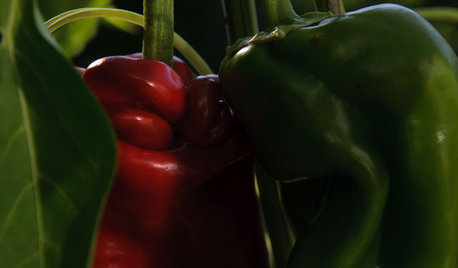


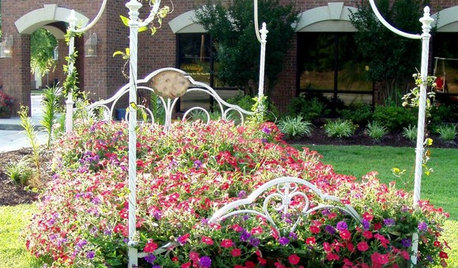


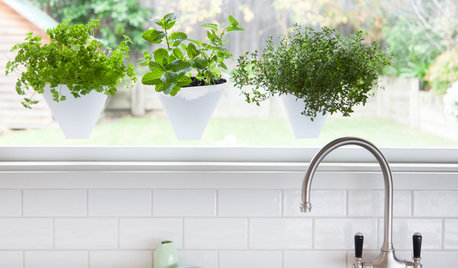
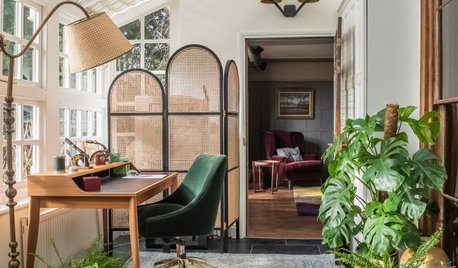
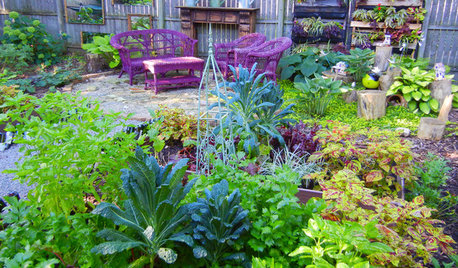
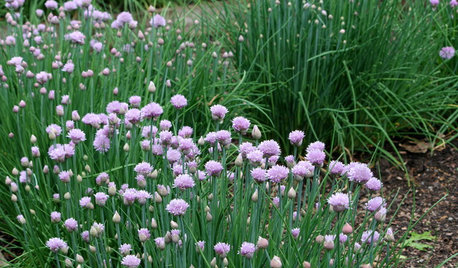



Related Discussions
When should pepper seeds go under the grow light
Q
Can i grow meyer lemons indoors without a lot of light?
Q
Is it possible to grow fig tree indoors under lights?
Q
Growing herbs indoors under lights
Q